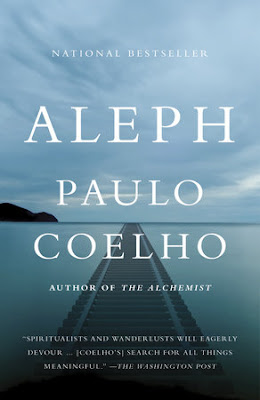Book Review: The Indian Business (2nd Edition) by Vanita Kohli
Genre: Business Management / Indian Business.
Number of Pages: 264
Published in: 2006 (2nd Edition)
It wasn’t long ago in the media in India was perceived as an instrument of State performing the role of educating Indians on the policies and programmes of the governments. I remember the days when we used to have “Doordarshan” and “Radio” functional under the complete control and regulation of the Government of India. These were mouthpieces of the government and as such their businesses were limited to propagating the ‘good’ works of the government and the political party in power. There was no private sector participation in TV and Radio. The Telecommunication too was part of the Department of Telecomm of the Government of India as such was also under the domain of the government. The Film Industry on the other hand was in the hands of private sector and the government’s presence was confined to certification. The film industry’s concentrations were in Mumbai, Kolkata and Chennai and were run more or less as family businesses, e.g. Prithviraj Studios, Mehboob Studies, etc.
The 1991 New Industrial Policies and subsequent liberalization programme brought about changes of fundamental nature. The media sector was not un-affected by these development. However, the freedom granted under the Constitution of India and the liberalized Indian population’s desire to be more informed gave the Media and Entertainment Sector an opportunity to grow as an industry. The 2002 Print Media Policy aimed at opening the sector to foreign participation by allowing 26 percent foreign direct investment in news and current affairs publications, and 74 percent foreign investment in non-news and non-current publications entry was a major depart from the 1955 Policy. These developments brought the M&E industry at the centre of business in India. The Corporatization of Telecom and subsequent entry of Radio City, Radio Mirchi, etc. as also NDTV, ZeeTV, CNBC, ETV, etc. The M&E in India has come a long way and is posed to dominate the future.
The expansion of the industry caused demand for the professional to manage the affairs of the M&E industry that has now acquired global recognition. It is this transformation from M&E as a public service to an Industry that I learnt while I was a student of Content Creation and Media Management Programme. We were informed about the business aspects of M&E Industry. About business strategies, about pricing, about costing and even about it’s educative and social roles in promoting a healthy and just society.
In this background the book entitled “the Indian Media Business” that came out first in 2003 is an important addition to the field of media business management. The book begins with “Investors have poured in over Rs. 20 billion into the Indian Media and entertainment (M&E) industry over 2004 and 2005. Some of the biggest private equity deals and initial public offers (IPOs) in this sector, in Asia, are being inked in India. Reliance-Adlabs and Nimbus-3i are recent examples. Across the business, in multiplexes , digital theatres, publishing and distribution, television software and several other areas investors are parking their money and sitting back to wait for the market to deliver. (Pg no. 15).” The investment, although not a major one at global level, is still significant. Even more significant are the positive trends as the potential for growth in the most populated democracy is huge. In drawing conclusion on the size of the market the author makes comparison between the conditions existing in India and China and concludes that India provides comparatively more conducive environment for the entry of indigenous and foreign player as also equal.
In the following section, the book devotes individual chapters to seven sectors, i.e. press, television, film, music, radio, telecommunication and internet. Each chapter traces the historical development of individual section of media before presenting the present status. For example, in the first chapter, it is said that the business of publishing did not get the required attention during 1960 and 1970s because of ‘high capital investment’ and ‘low returns’. However, the 2005 Policy which allowed FIIs set in motion the concept of ‘surviving in competition rather than protection’ and this competition concept gradually became more dominant one and its functioning too can be experienced in the sector also examining the policies and programme under which the sectors are functional. The detailed analysis of each of the media sectors gives an interesting insight into the compulsion and constraints that one faces in times of transition – a period when things are not settled.
The Metrics is an interesting segment of the seven chapters which looks at the business of buying and selling space or time. It looks at the reasons for selecting a particular media as also time or space as also location for advertising one’s product. The chapter progresses by looking at the pricing and methodology for arriving at a particular price tag for space or time. The chapters also look at the costs and taxation under Accounting Norms and finally on ‘valuation’ of the Sector.
Vanita Kohli-Khandekar is a practicing journalist as such has in-depth knowledge on not only about the history of M&E industry but also about its development in a fast changing Indian environment. In the second edition, produced after a gap of three years, she has poured in information, supported by cases and data’s that were unheard of. In the chapter on films she looks at the transition years with great sensibility. The Chapter on Music has also received similar attention. The music chapter looks at leading music companies such as Super Cassettes, Universal Music, Sony Music, etc and how their businesses have multiplied with the introduction of mobile telephony, MP3 players, iPods, etc. The radios have once again become popular. The growth of music industry has influenced the DVD and VCD production companies as also music video production companies.
Khandekar’s book, the first edition that is already declared as the best seller, is an important contribution to the field of media business management. A well-researched book that flows like a story is interesting to read also. The second edition of the book will serve as a comprehensive source of information on recent developments in the M&E industry and future trends thereof. The book would interest media and management students, researchers, and practitioners. It could also serve as a base document for all those who would like to venture into the business of Media and Entertainment.
*A must read.



Comments
Post a Comment